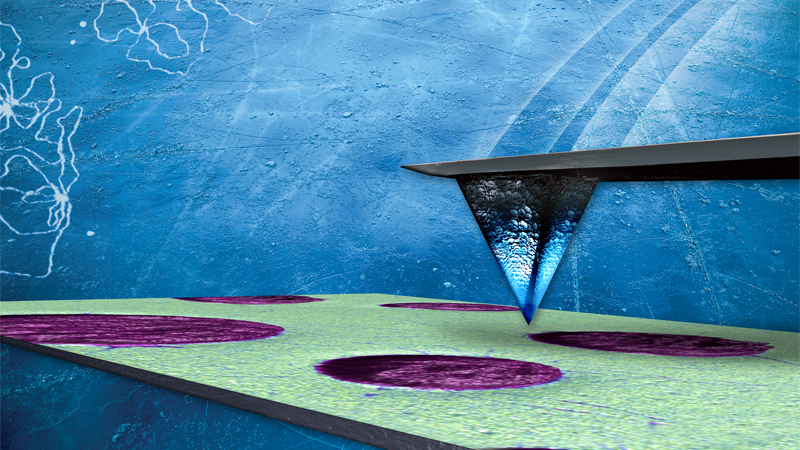PeakForce TUNA
PeakForce TUNA™ is an ideal method for probing conductivity of fragile samples such as organic photovoltaics, conductive nanotubes, and nanoparticles. It overcomes the limitations of traditional contact-mode-based conductive AFM techniques, which are severely restricted by sample damage or probe tip contamination from CAFM lateral forces. PeakForce TUNA provides direct, precise force control and eliminates lateral forces. This enables routine highsensitivity and high-resolution current imaging.
Now users can benefit from the full fA to μA current range, directly correlated quantitative nanomechanical property imaging with PeakForce QNM®, and the ease-of-use of ScanAsyst®, all with one module. PeakForce TUNA can also be integrated with environmental control to regulate oxygen and water levels down to ppm to accommodate the most sensitive samples.
PeakForce TUNA offers:
- Highest resolution current mapping on the most fragile samples
- Unmatched repeatability and consistency in nanoelectrical measurements
- Correlated nanomechanical and nanoelectrical properties
With the help of Conductive Atomic Force Microscopy (C-AFM) analysis in the PeakForce Tunneling AFM (PeakForce TUNA) module of the MultiMode 8, we were able to understand the location-specific nanoscale electrical conductivity of doped semiconductors. This has led us to explore many new materials and their electronic properties at nanoscale. We have been using the MultiMode 8 for the past three years and I must say this instrument is really powerful and robust.
Dr. Emila Panda, Indian Institute of Technology (IIT) Gandhinagar, India
With the combined application of PeakForce QNM and PeakForce TUNA we were uniquely able to determine the nanostructure and ionic conductivity distribution on humidity sensitive ionomers with unprecedented quality and resolution. For us, the versatility and flexibility of the MultiMode 8 AFM with these modes opens the path for numerous explorations of materials for electrochemical energy applications.
Dr. Renate Hiesgen, University of Applied Sciences Esslingen, Germany


